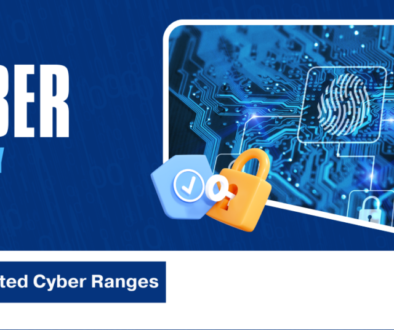Understanding Cryptojacking: The Hidden Threat in the Digital Landscape
Digital currencies revolutionized finance, sparking investment and innovation. Yet cryptojacking, a sinister offshoot, now plagues the cryptocurrency landscape. This nefarious practice hijacks unsuspecting users’ devices, secretly mining coins without consent. As virtual money gains traction, so does this hidden threat. It casts a shadow over the promising technology’s future. This illegal practice harms users and organizations. It often goes unnoticed, draining resources and slowing systems. This article explores cryptojacking. It covers its mechanisms, effects, and ways to prevent it.
Defining cryptojacking:
Cryptojacking is the illegal use of a device to mine cryptocurrency. This process usually uses the device’s power to do complex calculations. Confirming cryptocurrency transactions requires these. Cybercriminals exploit system vulnerabilities. They use malware or scripts on websites. Cybercriminals covertly infiltrate devices, siphoning computing power from unwitting victims. This insidious attack, silent and damaging, exploits resources without detection. Users remain oblivious as their systems fall prey to this stealthy digital heist.
“Cryptojacking” blends “cryptocurrency” and “hijacking,” coining a term for digital theft’s newest frontier. It means using devices to make digital currency without the owner’s consent.

How They Operate Cryptojacking:
Hackers can secretly take over your computer to make money for themselves. They do this by putting harmful programs on your computer. Or, they trick you into visiting dangerous websites. To stay safe, be careful about what you click on and use security software. For a deeper understanding of securing your devices, read our article on cybersecurity strategies for a remote workforce.
Cryptojacking Based on malware: Here, cybercriminals use malware on a victim’s device. This malware can infect systems through several delivery methods. These include phishing emails, infected downloads, and compromised software. Once installed, the malware runs in the background. It uses the device’s CPU to mine cryptocurrency. Excessive resource use may cause slow performance, overheating, and high energy costs.
Impact of Cryptojacking
The consequences of cryptojacking can be severe for individuals and organizations alike.
For individual users, the most immediate effects are:
- Decreased device performance.
- Increased energy use.
- Possible hardware damage due to overheating.
Detection and Prevention
Detecting cryptojacking can be challenging due to its stealthy nature. But, several indicators can signal the presence of cryptojacking activities, including:
- Unexplained Performance Issues: Slow or overheated devices may be used for mining.
- Increased Energy Bills: A sudden rise in electricity costs, with no change in usage, may mean cryptojacking.
- Browser Performance Problems: Some sites may have scripts that slow browsers. They could be mining scripts. They may be running in the background.

To safeguard against cryptojacking, users and organizations can implement several preventive measures:
- Use security software: It can stop bad programs from stealing your computer’s power to make money for others. Make sure to keep your security software up to date. To learn more about the importance of cybersecurity, check out our article on the power of cybersecurity in today’s digital universe.
- Regular Software Updates: Update your OS and software. It patches known flaws. This reduces the risk of cybercriminals exploiting them.
- Ad and Script Blockers: They can stop malicious scripts on websites. These tools can also enhance browsing speed and security.
- Monitor Device Performance: Users should check device performance and resource usage. It can help them spot unusual activity. Task managers and system monitors can show CPU and memory usage. This reveals potential cryptojacking threats immediately.
- Educate Users: Raising awareness of cryptojacking among employees can help them. They will recognize threats and adopt safer online habits.
Legal and Ethical Considerations
As cryptojacking grows, law enforcement is taking steps to combat it. International cooperation, like that of INTERPOL, is key to fighting these cross-border threats. Legal frameworks are evolving to punish cybercriminals. But technology is always changing. This poses challenges for regulators and law enforcement.
Furthermore, ethical considerations arise around the responsibilities of website owners and developers. As cryptojacking rises, it’s vital to protect against it. This has sparked debates about the ethics and environmental impact of cryptocurrency mining.
Conclusion
Cryptojacking is a major threat today. It exploits the rise of cryptocurrencies to target unsuspecting users. Cybercriminals are creating new, advanced ways to hijack resources. We must be aware and take action. People and organizations can protect their devices from cryptojacking. They can do this by learning about it and its detection methods. As technology evolves, we must stay informed and vigilant. It is vital in the fight against cryptojacking and other cyber threats.
For more exclusive information about cryptojacking, please visit: https://en.wikipedia.org/wiki/Cryptojacking
Disclaimer
This article is for educational use only. It is not professional advice. Technology evolves, cybercrime adapts, and precision grows harder to uphold. So, some details may have become outdated. Always consult with a cybersecurity professional for specific advice about your situation.
FAQs
Q1: What is cryptojacking?
- Cryptojacking is a cybercrime. Attackers use a victim’s computer to mine cryptocurrency without consent. Malware or exploiting web browser flaws can do this.
Q2: How can I tell if my device is being cryptojacked?
- Signs of cryptojacking are a sudden slowdown, overheating, and increased fan use. You may also see higher energy bills. You may also notice unusual spikes in CPU or GPU usage.
Q3: What are the common methods used for cryptojacking?
- Cryptojacking can occur via malicious downloads, phishing emails, or compromised websites. These methods run scripts in the background to mine cryptocurrency.



